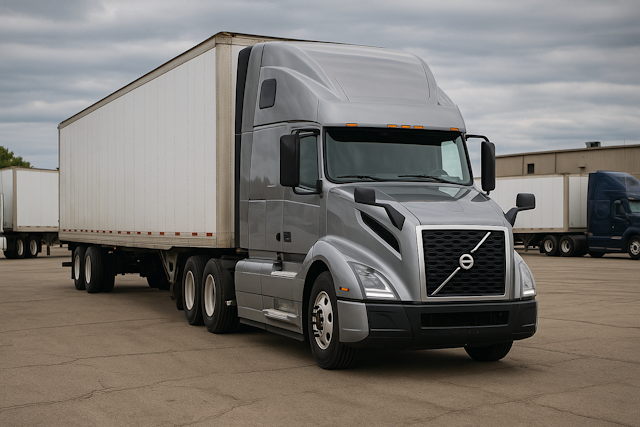Full News
Volvo Group Cuts Forecast for North American Truck Sales in 2025
Oct 21, 2025
Administrator

truckdrivers.biz
Volvo Group has lowered its forecast for heavy truck deliveries in North America to around 265,000 units in 2025, signaling a more cautious outlook for the freight and logistics sector. The company cited a weaker freight market, new tariffs, and overall economic uncertainty as the main reasons behind the downgrade.
In recent months, freight volumes in the U.S. and Canada have shown limited growth, while transportation companies continue to face high operating costs, tighter financing conditions, and reduced demand for new vehicles. According to Volvo, these factors are likely to slow down the replacement cycle of older trucks, as many fleet operators choose to extend the lifespan of existing vehicles rather than invest in new ones.
This trend could lead to a gradual aging of the truck fleet across North America, with potential side effects such as higher maintenance costs, reduced fuel efficiency, and greater environmental impact. Analysts also note that a slowdown in new truck sales could ripple through the entire supply chain — from component suppliers to service centers.
Despite the downgrade, Volvo emphasized its long-term commitment to the North American market and its ongoing investments in electric and low-emission vehicles. The company believes that modernization will resume once freight demand stabilizes and financial conditions improve.
For now, however, the industry faces a year of adjustment. Trucking companies are expected to focus on efficiency, repairs, and cost control, rather than large-scale fleet renewals. Volvo’s revised forecast reflects a broader sentiment among major manufacturers: 2025 may be a year of consolidation, not expansion, for the heavy truck sector.
In recent months, freight volumes in the U.S. and Canada have shown limited growth, while transportation companies continue to face high operating costs, tighter financing conditions, and reduced demand for new vehicles. According to Volvo, these factors are likely to slow down the replacement cycle of older trucks, as many fleet operators choose to extend the lifespan of existing vehicles rather than invest in new ones.
This trend could lead to a gradual aging of the truck fleet across North America, with potential side effects such as higher maintenance costs, reduced fuel efficiency, and greater environmental impact. Analysts also note that a slowdown in new truck sales could ripple through the entire supply chain — from component suppliers to service centers.
Despite the downgrade, Volvo emphasized its long-term commitment to the North American market and its ongoing investments in electric and low-emission vehicles. The company believes that modernization will resume once freight demand stabilizes and financial conditions improve.
For now, however, the industry faces a year of adjustment. Trucking companies are expected to focus on efficiency, repairs, and cost control, rather than large-scale fleet renewals. Volvo’s revised forecast reflects a broader sentiment among major manufacturers: 2025 may be a year of consolidation, not expansion, for the heavy truck sector.